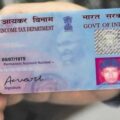Trademark registration process in India
A trademark is a intellectual property consisting of recognizable sign, expression or design which identifies particular product or services from other. A trademark can be owned by a individual, business organization or legal entity. A trademark can be located on package label or organization. Trademark is an intellectual property that is used to differentiate products and services of one firm or individual from others. A trademark is an unique identifier for a product or a firm. Owner of a trademark can pursue legal action for infringement of trademark.
In this article, we would discuss important points related to registration of trademark in India. We would discuss in step by step procedure for obtaining a trademark registration. Mean while you can read articles on trademark class, Trademark public search in India, Tips on IPIndia public search, Advantages and disadvantages of external and internal TM search.
You can also download our free PDF for detailed guide on IPIndia trademark search from IPINdia trademark search guide 1 and IPIndia trademark search guide 2
Trademark registration procedure in India
Trademark registration is one of the most important activities to protect a trademark from a external infringement. A brand equity is developed over a period of time and it is imperative to make use of it.
Trademark registration procedure can be divided into following steps-
- Search of trademark
- Filing of trademark application
- Examination of trademark application by authority
- Post Examination
- opposition from general public
- Registration of trademark
Step 1 – Trademark search
Trademark search is initial and most important steps in trademark registration in India. It is always advisable to perform trademark search by an external professional firm as it offers several advantages over internal trademark search. Some of the advantages offered by a external firm are –
- External professionals offers a niche expertise in trademark search which cant be replicated by internal staff.
- Professional firms have time tested methods to perform optimal research in less turn around time. This results in better trademark search over a lesser period of time.
- External vendors have greater resources compared to internal team.
- External vendors have global expertise which prevents firm from getting entangled in future infringement suits in other country.
Trademark search is performed over different databases of trademarks and company’s name. Trademark databases are also known as registry. Each country has its own trademark registry. Different databases that are searched for trademarks includes – IPIndia portal, MCA Website, Madrid systems database and common law database.
Main objective of conducting a trademark search is to make sure that trademark selected for final registration is a unique one and there is no prior trademark registered in India or elsewhere.
Step 2 – Filing of trademark application
A application for a trademark can be filed in a single or multiple classes. A trademark class is set of 45 different codes given as per NICE classification. There are 34 classes for products and 11 classes for services. You can check detailed list of trademark classes here.
Application for trademark registration can be filed either online or a hard copy can be submitted a trademark office. Though, it is recommended to file trademark form online for better ease of access. The application for a trademark need to be supported by various mandatory documents.
Step 3 – Examination of trademark application
Your trademark application is reviewed by trademark examiner post filing of trademark application with relevant documents. This examination is done under the guidelines issued under Trademarks Act, 2016. A mandatory examination report has to sent to applicant within 30 days of trademark application filing.
The examination report might or might not contain some objections to your trademark application. These objections could be absolute, procedural or relative. Applicant need to reply to objections in examination report within 30 days of receiving examination report. A reply to objections should mitigate all objections that are mentioned in trademark objection report.
Step 4 – Post Examination
The trademark authority also known as examiner would usually conduct a hearing after a response has ben received by applicant. This usually takes place when a trademark examiner is not entirely satisfied by a response to examination report.
Two scenarios can arise after a hearing – 1) acceptance of trademark application or rejection. If application is accepted by trademark authority after receiving response then examiner will forward TM application to publication in the journal otherwise rejection of TM application would be conveyed to applicant along with reasons for the same.
Step 5 – Advertisement of the trademark
 Once your trademark has been accepted by a trademark authority then same trademark would be advertised and published in trademark journal for 4 months. The main aim of advertisement and publication of trademark is to invite opposition from general public if any. The trademark is updated in trademark registry once every week and if a member from a general public has any objection with said trademark then he or she can register opposition for the same.
Once your trademark has been accepted by a trademark authority then same trademark would be advertised and published in trademark journal for 4 months. The main aim of advertisement and publication of trademark is to invite opposition from general public if any. The trademark is updated in trademark registry once every week and if a member from a general public has any objection with said trademark then he or she can register opposition for the same.
Step 6 – Opposition from general public
If any member of a general public has any opposition to the trademark registered then he or she can file a complaint with trademark authority. This is usually done in cases where there is a case of trademark infringement by new trademark registered.
Opposition party need to file form TM – O within 4 months of publication of trademark in trademark journal. A due hearing would be conducted by trademark authority to listen to aggrieved party for their concerns. Aggrieved party needs to file counter statement along with evidence to support their claim on trademark.
Thus, it is very important to conduct a through IPIndia trademark search beforehand to reduce risk of getting a opposition from general public on trademark. It highlights importance of complete trademark search for any organization. It is seen that, companies conduct a incomplete or no trademark search to save from time and cost related to trademark search. This should be avoided completely as it can lead to complete loss of trademark even after all the hard work, if trademark search is incomplete.
Step 7 – Registration of trademark
Trademark is registered and trademark registration certificate is issued to applicant if no objection is received from general public within 4 months of publication of trademark in trademark journal.
If objection has been received by a general public within 4 months of publication then complete process for objection removal has to be followed in front of trademark authority. This usually takes time but if objection is rejected then trademark registration certificate is issued to applicant. This registration certificate is valid for a period of 10 years and can easily be renewed by applicant.
In this article, we have discussed various steps required for trademark registration in India. As it can be observed that trademark search is one of the most important steps in trademark registration process and thus it should be conducted exhaustively. Along with TM Search, filing of publication along with complete documents is also necessary. We would write more articles on documents required for TM registration in future.
Meanwhile, you can equip yourself by reading our articles on trademark and trademark public search in India.
















